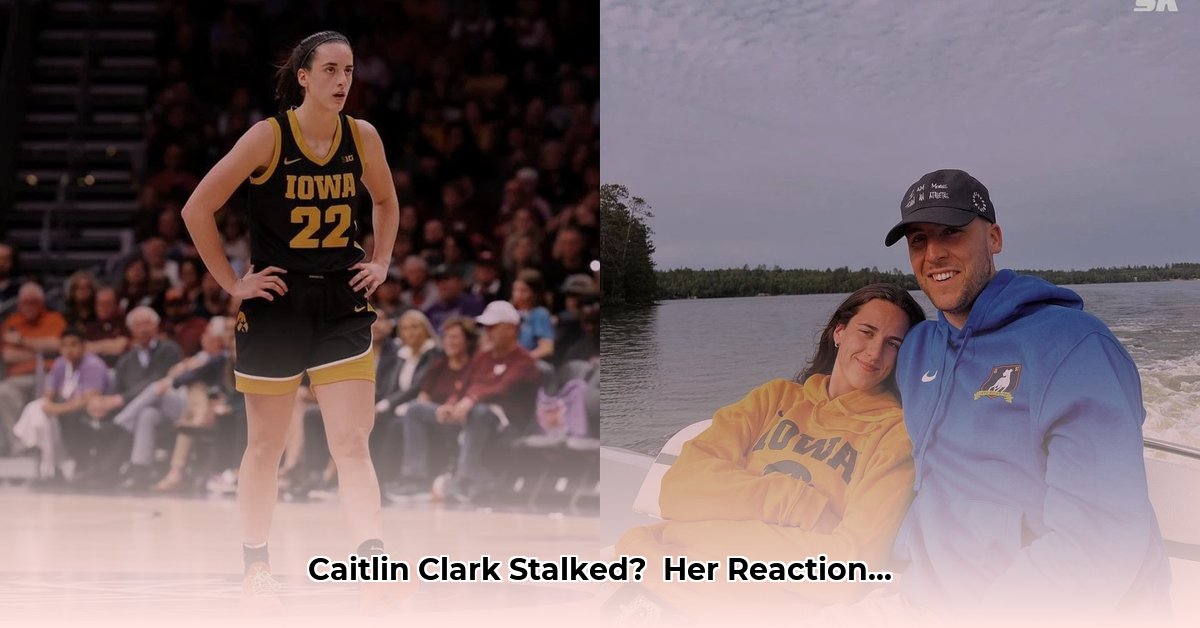Caitlin Clark, the renowned basketball star, faced a terrifying ordeal in late 2024 and early 2025: she was stalked. The experience left her feeling “terrorized, frightened, and intimidated,” forcing her to adapt her daily routines for safety. This is her story of resilience.
How Caitlin Clark Responded to a Stalking Ordeal
In the winter of 2024-2025, Caitlin Clark found herself the target of a stalker, later identified as 55-year-old Michael Thomas Lewis from Texas. Lewis bombarded Clark with vulgar and sexually explicit messages on X (formerly Twitter) for over two weeks. This harassment profoundly impacted Clark, leaving her feeling deeply disturbed and unsafe.
Facing Fear: Clark’s Proactive Response
Rather than succumb to fear, Clark took immediate action. She contacted law enforcement and cooperated fully with the ensuing investigation, which led to Lewis’s arrest and charges of felony stalking in Marion County. Authorities were able to track Lewis using his IP address, locating him at both a hotel and a library in Indianapolis. No-contact orders were issued to protect Clark and her boyfriend, likely a result of her collaboration with authorities.
The Silent Strength: Clark’s Private Battle
While the legal process unfolded, Clark largely remained silent about the emotional toll of the stalking. Her statement revealed her fear and intimidation, but the full extent of the psychological impact remains private. Stalking can cause significant stress, anxiety, and disrupt one’s sense of safety and well-being. Clark’s decision to maintain privacy suggests a focus on healing and recovery on her own terms.
Beyond the Headlines: Online Harassment and Female Athletes
Clark’s experience highlights the broader issue of online harassment targeting female athletes. This incident raises crucial questions about the responsibility of social media platforms in preventing and addressing such abuse. Some advocate for stricter measures to identify and ban perpetrators, while others emphasize the need for user education and fostering online civility. Research into effective strategies is ongoing, and the most impactful solutions may evolve over time.
A Call for Change: Protecting Athletes in the Digital Age
Clark’s story underscores the need for ongoing dialogue about online safety, especially for female athletes. It emphasizes the importance of support systems for victims of stalking and harassment. How can we better protect athletes from digital intrusions? What support do they need to navigate these difficult situations? These questions demand our attention. While definitive answers remain elusive, continued research and open discussion are crucial steps toward creating a safer digital landscape.
The Emotional Toll: Understanding the Impact on Clark
The stalking incident undoubtedly took a significant emotional toll on Caitlin Clark. While she bravely chose to maintain privacy, it’s essential to recognize the potential psychological impact of such experiences. Some experts suggest that stalking can lead to anxiety, depression, and even post-traumatic stress disorder, though individual responses vary. Ongoing research is crucial to fully understanding the long-term effects.
Adapting to Fear: Changes in Clark’s Daily Life
The stalking incident forced Clark to make significant changes to her daily routine. She began disguising herself in public, a drastic measure for someone accustomed to recognition. She also altered her schedule to become less predictable, requiring constant vigilance and awareness of her surroundings. These adaptations likely added another layer of stress to an already challenging situation.
Seeking Safety: Clark’s Cooperation with Law Enforcement
Clark’s immediate reporting of the stalking to law enforcement proved crucial. Her cooperation led to the arrest of Michael Lewis and the implementation of protective orders. This proactive approach demonstrates her commitment to safety and her understanding of the importance of engaging with the legal system.
A Shared Struggle: Support Systems for Athletes
Clark’s experience highlights the need for robust support systems for athletes facing harassment. Organizations like the Women’s Sports Foundation offer resources and advocate for policy changes, while legal options like restraining orders can provide legal protection. Social media platforms also have reporting mechanisms, though their effectiveness is often debated. Additionally, teams and leagues can offer security, counseling, and legal aid, and therapy and counseling services can help athletes cope with the emotional trauma.
Ongoing Challenges: Limitations of Current Support
While support systems exist, ongoing challenges remain. Restraining orders aren’t always foolproof, and the effectiveness of social media reporting mechanisms varies. There are also ongoing debates about balancing free speech with user protection. Continued research and open discussion are crucial for refining these systems and developing more effective prevention and intervention strategies.
A Path Forward: Clark’s Resilience and the Need for Change
Caitlin Clark’s response to this ordeal exemplifies resilience. She took decisive action to protect herself and cooperated with authorities, demonstrating strength and determination. Her experience underscores the need for vigilance, proactive measures, and the power of speaking out. It also highlights the urgent need for a more comprehensive approach to athlete safety, encompassing preventative measures, robust support services, and accountability for perpetrators. This includes addressing the specific vulnerabilities of female athletes and fostering a culture of respect and safety both on and off the court. While we may not have all the answers yet, Clark’s story compels us to continue the conversation and work towards a future where athletes can thrive without fear.







